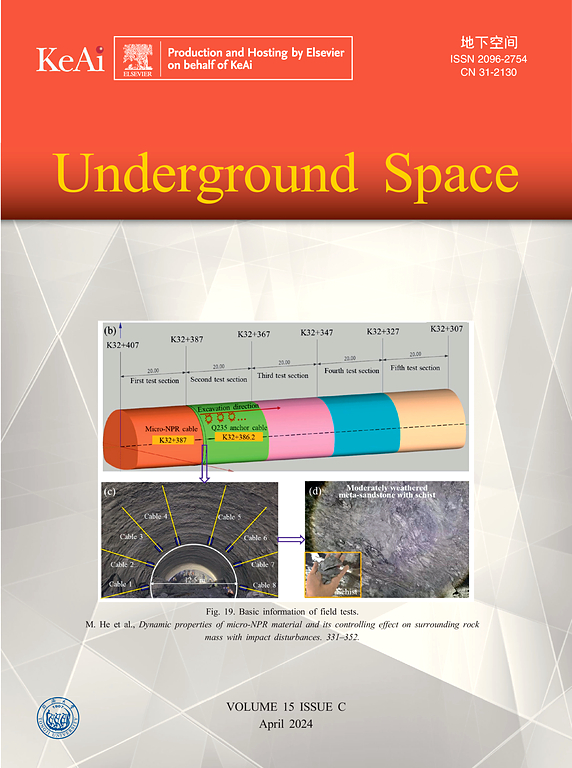Multi-patch attention Transformer for multivariate long-term time series forecasting of TBM excavation parameters
IF 8.3
1区 工程技术
Q1 ENGINEERING, CIVIL
引用次数: 0
Abstract
To address the research gap in multivariable long-term time series forecasting in the field of tunnel boring machine (TBM) and provide long-term insights for decision-making in TBM construction, this paper studies a novel Transformer-based forecasting model. Leveraging a multi-patch attention mechanism, the newly developed multi-patch attention Transformer (MPAT) model is designed to predict long-term trends of multiple TBM operation parameters. The innovation lies in finding the most relevant time delay series of the input series through autocorrelation calculation, and designing a multi-patch attention mechanism to replace the traditional attention mechanism of Transformer, so that the model can capture local and global information of the series and improve the accuracy of long-term prediction of high-frequency and weakly periodic TBM data. Experimental results have shown that MPAT model has a significant effect on capturing TBM data in terms of temporal dependencies. In a case study, we applied MPAT to the Rongjiang Guanbu Water Diversion Project in Guangdong Province and predicted four excavation parameters. The experimental results show that MPAT exhibits accurate predictive ability when the input length is 36 and the outputs are 12, 24, 48, and 72, respectively. In comparison with some state-of-the-art models, MPAT outperforms MSE by 19.1%, 23.6%, 36.4%, and 48.3%, respectively. We also discussed the impact of input length and the number of patches on performance, and found that each prediction length has the best input length corresponding to it, and longer inputs don’t represent more accurate predictions. The determination of the number of patches should also depend on the input length, as too many or too few patches can affect the capture of local information in the sequence.
TBM开挖参数多变量长期时间序列预测的多补丁关注变压器
为了解决隧道掘进机多变量长期时间序列预测的研究空白,为隧道掘进机施工决策提供长期参考,本文研究了一种基于变压器的隧道掘进机预测模型。利用多补丁注意机制,新开发的多补丁注意转换器(MPAT)模型用于预测TBM多个运行参数的长期趋势。创新之处在于通过自相关计算找到输入序列中最相关的时滞序列,并设计了一种多补丁关注机制来取代Transformer的传统关注机制,使模型能够捕获该序列的局部和全局信息,提高高频弱周期TBM数据的长期预测精度。实验结果表明,MPAT模型在时间依赖性方面对TBM数据的捕获效果显著。以广东容江关埠引水工程为例,应用MPAT对4个开挖参数进行了预测。实验结果表明,当输入长度为36,输出长度为12、24、48和72时,MPAT具有准确的预测能力。与一些最先进的模型相比,MPAT分别比MSE高出19.1%、23.6%、36.4%和48.3%。我们还讨论了输入长度和patch数量对性能的影响,发现每个预测长度都有与之相对应的最佳输入长度,更长的输入并不代表更准确的预测。补丁数量的确定还应取决于输入长度,因为补丁太多或太少都会影响序列中局部信息的捕获。
本文章由计算机程序翻译,如有差异,请以英文原文为准。
求助全文
约1分钟内获得全文
求助全文
来源期刊

Underground Space
ENGINEERING, CIVIL-
CiteScore
10.20
自引率
14.10%
发文量
71
审稿时长
63 days
期刊介绍:
Underground Space is an open access international journal without article processing charges (APC) committed to serving as a scientific forum for researchers and practitioners in the field of underground engineering. The journal welcomes manuscripts that deal with original theories, methods, technologies, and important applications throughout the life-cycle of underground projects, including planning, design, operation and maintenance, disaster prevention, and demolition. The journal is particularly interested in manuscripts related to the latest development of smart underground engineering from the perspectives of resilience, resources saving, environmental friendliness, humanity, and artificial intelligence. The manuscripts are expected to have significant innovation and potential impact in the field of underground engineering, and should have clear association with or application in underground projects.
 求助内容:
求助内容: 应助结果提醒方式:
应助结果提醒方式:


